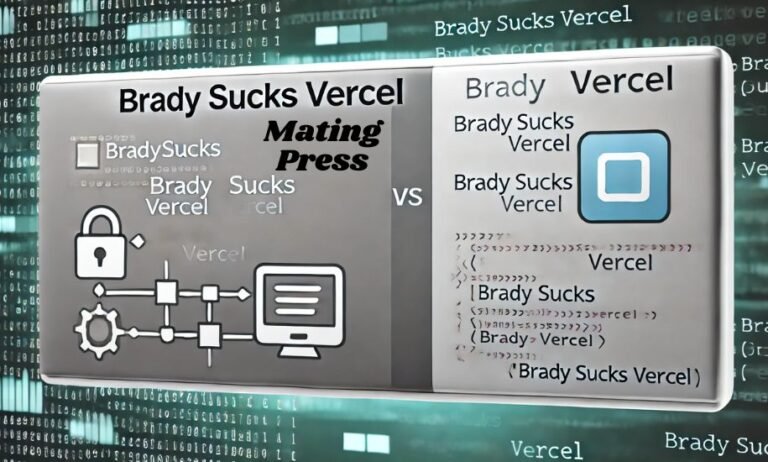Introduction to Syntax Errors
Syntax errors can feel like the bane of every programmer’s existence. You’re deep in code, riding a wave of creativity, when suddenly—bam! Your program crashes and burns due to some pesky syntax error you didn’t see coming. These seemingly minor mistakes can halt your progress and leave you scratching your head in confusion.
But fear not! Understanding syntax errors is crucial for anyone venturing into the world of programming. They are often the first hurdle any coder faces, regardless of skill level or language choice. In this blog post, we’ll explore what syntax errors are, why they matter, and how to tackle them head-on so that you can keep on coding without interruption. Ready to dive into the nitty-gritty? Let’s get started!
Understanding the Importance of Syntax in Programming
Syntax is the backbone of programming languages. It provides structure and meaning to code, allowing developers to communicate their intentions clearly.
When syntax is correct, programs run smoothly. Errors in syntax can lead to unexpected behavior or program crashes. This makes understanding the rules vital for anyone coding.
Different languages have unique syntactical rules. A Python programmer must grasp indentation, while a Java developer focuses on semicolons and braces. Mastering these nuances enhances efficiency and reduces frustration.
Moreover, clear syntax contributes to better collaboration among teams. Code becomes easier to read and maintain when everyone adheres to established conventions.
Investing time in understanding syntax pays off significantly in debugging efforts as well. Identifying errors early saves countless hours down the road—an invaluable skill for any programmer aspiring for success in this domain.
Types of Syntax Errors and Their Causes
Syntax errors come in various forms, each with its unique causes. One prevalent type is the missing semicolon. This small punctuation mark often marks the end of a statement but can easily be overlooked, leading to confusion during code execution.
Another common error arises from unclosed parentheses or brackets. Forgetting a closing bracket can cause entire blocks of code to misbehave or produce unexpected results.
Incorrect indentation frequently trips up programmers as well. Many programming languages rely on specific formatting for clarity and structure; failing to align your code properly can lead to significant headaches.
Misspelled keywords or variables present an often-ignored pitfall. A simple typo can derail functionality, turning what should be straightforward commands into frustrating obstacles that halt progress and require meticulous debugging efforts.
Common Syntax Errors and How to Identify Them
Syntax errors can be frustrating, especially when they halt your progress. Knowing how to identify them is crucial for any programmer.
One of the most common issues is a missing semicolon at the end of statements in languages like JavaScript or C++. This seemingly minor oversight can lead to significant headaches.
Unclosed parentheses or brackets also cause confusion. If you forget to match them properly, your code won’t run as expected.
Incorrect indentation often trips up those working with Python. The language relies heavily on proper spacing and alignment, making this an easy mistake to overlook.
Misspelled keywords or variable names are another frequent culprit. A tiny typo can prevent your program from functioning correctly.
Being aware of these common syntax errors helps streamline debugging and enhances coding efficiency.
Tips for Avoiding Syntax Errors
Keeping your code clean is essential. Use consistent formatting to make it easier to spot mistakes. Indentation should be uniform across your project, so that every block of code stands out.
Utilize comments liberally. They not only explain what you’re doing but can also highlight sections where syntax error are often introduced.
Embrace a version control system like Git. Frequent commits allow you to track changes, making it simpler to pinpoint when an error was introduced.
Integrate a linter into your workflow. These tools automatically check for common syntax issues and provide real-time feedback as you code.
Review your work aloud or pair-program with someone else. Fresh eyes can catch errors you may have overlooked in the heat of coding.
Techniques for Fixing Syntax Errors
Fixing syntax errors can be a straightforward process if you approach it methodically. Start by reading the error message carefully; it often points to the exact line where the issue occurs.
Next, isolate the problematic code. Comment out sections of your code to narrow down where things go wrong. This trial-and-error method helps in pinpointing the issue quickly.
Utilize integrated development environments (IDEs) or text editors with built-in linting tools that highlight syntax issues as you type. These tools can save time and reduce frustration.
Don’t underestimate the power of peer reviews. Having someone else review your work provides fresh eyes that might catch mistakes you’ve overlooked.
Practice makes perfect. Regular coding will help solidify your understanding of correct syntax over time, making errors less frequent in future projects.
Types of Syntax Errors
Syntax errors can derail your programming efforts, but understanding their types helps in diagnosing issues swiftly.
One common type is the missing semicolon. This small punctuation mark signifies the end of a statement, and its absence can lead to confusion for compilers.
Unclosed parentheses or brackets are another frequent pitfall. Forgetting to close these structures can create cascading errors throughout your code.
Incorrect indentation also poses problems, especially in languages like Python where whitespace matters significantly. Misaligned lines disrupt logical flow and functionality.
Misspelled keywords or variables may seem trivial but often result in frustrating debugging sessions. Ensuring accurate spelling is crucial for maintaining clarity and avoiding runtime failures.
Recognizing these syntax error types enables programmers to streamline their coding process efficiently.
A. Missing Semicolons
Missing semicolons can be a programmer’s worst nightmare. These tiny punctuation marks play a crucial role in signaling the end of statements. When they’re absent, the compiler is often left confused about where one instruction ends and another begins.
This confusion typically results in syntax errors that can lead to unexpected behavior or program crashes. The error messages may not always point you directly to the missing semicolon, making it even more challenging to identify the issue.
To avoid this pitfall, develop a habit of double-checking your code before execution. Utilizing an Integrated Development Environment (IDE) with linting capabilities can also help catch these mistakes early on.
In languages like JavaScript or C++, overlooking just one semicolon might mean hours spent searching for elusive bugs elsewhere in your codebase. So stay vigilant—those little lines make a big difference!
B. Unclosed Parentheses or Brackets
Unclosed parentheses or brackets may seem like a small oversight, but they can derail your entire code. When you forget to close them, the compiler gets confused and throws a syntax error. This makes debugging more challenging than it needs to be.
Imagine writing a complex function and realizing halfway through that you’ve left an opening bracket hanging in the air. The result? A flurry of error messages that don’t always pinpoint the issue’s location.
To avoid this pitfall, make it a habit to check each opening parenthesis with its corresponding closing partner as you type. Some coding environments even highlight matching pairs, which can save time during development.
If you’re using nested structures, take extra care. It’s easy for an unclosed bracket to slip past unnoticed amidst multiple layers of logic. Developing attention to detail will significantly reduce these frustrating moments in your coding journey.
C. Incorrect Indentation
Incorrect indentation is a common syntax error that can lead to frustrating debugging sessions. In programming languages like Python, indentation is not just for readability; it dictates the flow of control in your code. A simple misalignment can result in unexpected behavior or errors.
When blocks of code are not correctly indented, the interpreter struggles to understand which lines belong together. This might cause functions or loops to behave erratically, making it hard to trace where things went wrong.
Using consistent spacing—whether tabs or spaces—is crucial for maintaining clarity and functionality. Many editors now offer features that automatically align your code, but it’s still important to pay attention as you type.
Developing good habits early on will save time later. Regularly check your indentation levels and use a linter tool if available; they help catch these issues before they become headaches during runtime.
D. Misspelled Keywords or Variables
Misspelled keywords or variables can trip up even the most seasoned programmers. A single character out of place may result in a syntax error that halts your code execution.
These mistakes often arise from simple typos, especially when working with lengthy variable names or complex functions. For example, typing “pritn” instead of “print” will cause an immediate halt to your script.
Developers sometimes overlook these errors during rapid coding sessions. Using consistent naming conventions helps mitigate this issue and enhances readability.
Employing features like auto-complete in modern IDEs can also prevent misspellings before they occur. Regularly reviewing and testing your code is key for catching those pesky errors early on.
Being mindful of how you name and refer to elements within your codebase goes a long way toward ensuring smooth functionality without interruptions caused by syntax errors.
How to Identify and Debug Syntax Errors
Identifying and debugging syntax errors can feel daunting. However, with a systematic approach, you can simplify the process.
Start by carefully reading your code. Syntax errors often manifest as red flags in your editor or compiler. Pay attention to error messages—they provide clues about where things went wrong.
Another effective method is to isolate sections of your code. Comment out blocks and test them individually to pinpoint the problem area. This way, you can narrow down which section contains the syntax error.
Using built-in tools within Integrated Development Environments (IDEs) is also beneficial. Many IDEs highlight syntax issues in real-time, making it easier to catch mistakes early on.
Remember that patience is key when debugging. Take breaks if you’re feeling stuck; sometimes stepping away offers fresh perspectives for identifying elusive errors lurking beneath the surface of your code.
Tips for Avoiding Syntax Errors
To reduce the likelihood of syntax errors, start by adopting a consistent coding style. Use clear naming conventions and stick to them throughout your project.
Regularly commenting on your code can also help you stay aware of its structure. This practice not only aids in understanding but makes it easier to spot mistakes at a glance.
Utilize modern Integrated Development Environments (IDEs) or text editors that offer real-time syntax checking. These tools highlight issues as you type, allowing for immediate corrections.
Another effective strategy is practicing code reviews with peers. Fresh eyes often catch errors that may slip past you during solo work.
Take frequent breaks while coding. Stepping away from your screen can refresh your mind and improve focus when you return, making it easier to identify any lingering syntax problems.
Common Mistakes to Watch Out For
Common mistakes can derail your coding journey, especially when dealing with syntax errors. One frequent issue is the missing semicolon. It may seem minor but can lead to major headaches in many programming languages.
Another pitfall involves unclosed parentheses or brackets. This oversight often results in confusion during execution, as the code can’t interpret where expressions begin and end.
Incorrect indentation is also a prevalent mistake, particularly in languages like Python. Failing to maintain proper structure can confuse both you and the interpreter.
Misspelled keywords or variable names are sneaky culprits too. A simple typo might prevent your code from running smoothly, leaving you scratching your head as to why it won’t execute properly.
Being aware of these common pitfalls helps foster better coding practices and minimizes frustration down the line. Pay close attention; small details matter significantly in programming!
Resources for Learning More About Syntax Errors
To deepen your understanding of syntax errors, various resources can prove invaluable. Online platforms like Codecademy and freeCodeCamp offer interactive lessons that help you grasp the nuances of programming languages while emphasizing common pitfalls.
YouTube channels dedicated to coding tutorials also provide visual explanations. These videos often highlight real-world examples, making it easier to recognize syntax errors in context.
Books such as “Clean Code” by Robert C. Martin delve into best practices for writing error-free code. They guide you on maintaining readability and structure, which are crucial for preventing mistakes.
Consider joining forums or communities like Stack Overflow where developers share their experiences with syntax issues. Engaging with others can expose you to a wealth of knowledge and practical advice.
Official documentation from programming language creators is a goldmine for troubleshooting tips related specifically to syntax errors.
Conclusion
Syntax errors are an inevitable part of programming. They can be frustrating, but understanding their nature can make a big difference in your coding experience. By recognizing the common types of syntax error and learning how to identify and fix them, you not only improve your skills but also enhance the efficiency of your workflow.
With consistent practice and attention to detail, avoiding these pesky mistakes becomes easier over time. Remember that even seasoned programmers face syntax error; it’s all about how you approach them when they occur. Utilize available resources and keep refining your technique. Embrace each error as a stepping stone toward becoming a more proficient programmer. Happy coding!







